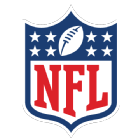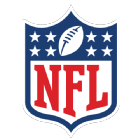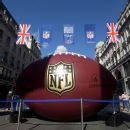EAST RUTHERFORD, N.J. — On a rainy day when Matt Ryan lost two fumbles, the Atlanta Falcons found a way to perhaps save their season.
It was far from a flawless effort at MetLife Stadium against the New York Jets. But a team in the midst of a three-game losing streak just needed one break — any break — to go its way.
Such happened for the Falcons, who scratched and clawed their way to a 25-20 win with key plays from all three phases. Now at 4-3, the Falcons established a little momentum going into next week’s NFC South opener on the road at Carolina. Winning the division always is the emphasis for coach Dan Quinn, and now the Falcons have a chance to go make a statement despite a rocky start.
What got better for the Falcons this week? Improvement in the red zone and third down was the emphasis leading into the game. The numbers might not reflect it — the Falcons went 5 for 14 on third down and 2 for 6 in the red zone — but they came up with a big third-down conversion when Ryan hit Mohamed Sanu for a 15-yard gain on third-and-5 late in the game. Ryan also hit Sanu with an 8-yard touchdown in the red zone fourth quarter that gave the Falcons their first lead; lead they didn’t relinquish.
Finally, the Falcons were able to hit on some big plays. One was Ryan’s 53-yard throw to Julio Jones that set up a touchdown. The other was a 52-yard run by Tevin Coleman that set up Ryan’s 8-yard score to Sanu.

• Statistics
• Scoreboard
• 2017 schedule, results
• Standings
Matt Bosher’s late punt that pinned the Jets at their own 4-yard line and Kemal Ishmael’s fumble recovery were two special teams plays that helped the Falcons to victory as well.
But nothing probably meant more to the Falcons then the defensive effort. There were plenty of third-down stops, with players such as Grady Jarrett and Adrian Clayborn forcing the Jets off the field in key situations. The Falcons forced the Jets to go 5 of 15 on third down. And the Jets never made it into the red zone.
The win, of course, wiped away some of the negative, like the Ryan fumbles, a drop by tight end Austin Hooper in the end zone, and cornerback Desmond Trufant getting beat for a touchdown. But again, the Falcons have just a little momentum now, which could be all they need to begin their march toward a second consecutive division title.








